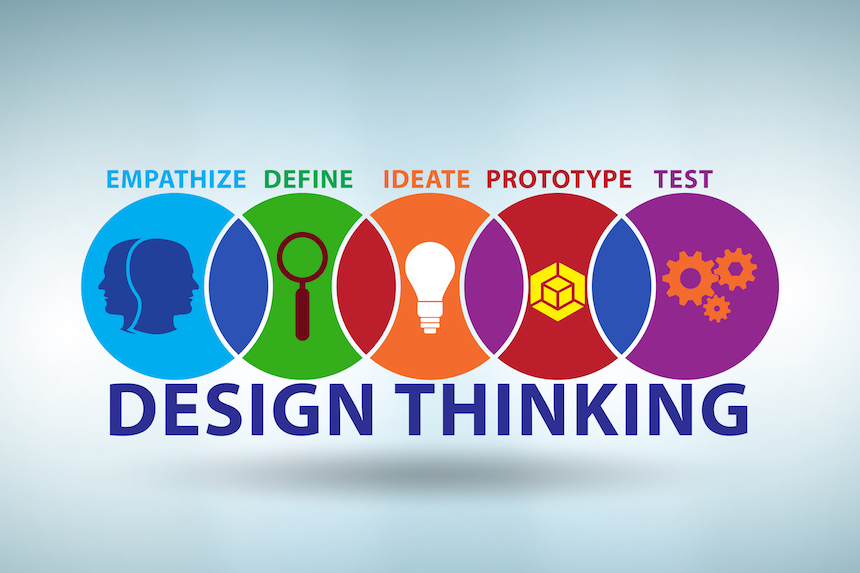
The design thinking concept - 3d rendering
In today’s dynamic business landscape, organizations face a myriad of complex challenges
To effectively address these challenges, a creative and innovative approach is required. Design thinking, a human-centered problem-solving methodology, offers a unique framework for tackling business problems. This article explores the concept of design thinking and highlights how applying creative approaches can help businesses overcome their most pressing challenges
1. Understanding Design Thinking:
Design thinking is a problem-solving approach that emphasizes empathy, collaboration, and experimentation. It involves understanding the needs and motivations of users, defining the problem, generating innovative ideas, prototyping and testing solutions, and iterating based on feedback. Design thinking encourages a non-linear and iterative process that fosters creativity and leads to innovative solutions.
2. Putting Users at the Center:
A core principle of design thinking is putting users at the center of the problem-solving process. By empathizing with users and gaining deep insights into their needs, desires, and pain points, businesses can uncover valuable opportunities for innovation. Understanding users’ perspectives and experiences allows organizations to design products, services, and experiences that truly meet their needs and exceed their expectations.
3. Embracing Iteration and Prototyping:
Design thinking encourages a mindset of continuous improvement through iteration and prototyping. Rather than striving for a perfect solution from the start, businesses embrace the concept of “fail fast, learn faster.” By creating quick prototypes and gathering feedback, organizations can refine their ideas and solutions based on real-world insights. Iteration allows for experimentation, learning from mistakes, and ultimately arriving at more innovative and effective outcomes.
4. Promoting Cross-Disciplinary Collaboration:
Successful design thinking relies on diverse perspectives and collaboration across disciplines. By bringing together individuals from various backgrounds, skills, and expertise, organizations can leverage the collective intelligence and creativity of their teams. Collaborative ideation sessions, workshops, and cross-functional projects encourage the exchange of ideas and foster a culture of innovation within the organization.
5. Encouraging Creative Problem Framing:
Design thinking encourages reframing problems and challenges in creative and alternative ways. By approaching problems from different angles and questioning assumptions, businesses can uncover new insights and opportunities. This divergent thinking enables organizations to identify novel solutions and break free from traditional approaches that may limit creativity and innovation.
6. Embracing a Culture of Experimentation:
Design thinking encourages a culture of experimentation and risk-taking. Organizations that embrace design thinking understand that not all ideas will succeed, but each failure provides valuable insights and learning opportunities. By creating a safe environment for experimentation and celebrating both successes and failures, businesses can foster a culture that encourages creative thinking, innovation, and continuous improvement.
Conclusion:
Design thinking offers a powerful framework for applying creative approaches to business challenges. By putting users at the center, embracing iteration and prototyping, promoting cross-disciplinary collaboration, encouraging creative problem framing, and embracing a culture of experimentation, organizations can unlock their creative potential and develop innovative solutions. Design thinking provides a structured yet flexible approach to problem-solving, enabling businesses to navigate the complexities of the modern business landscape and stay ahead of the curve. By embracing design thinking, organizations can drive innovation, create value for their customers, and thrive in an ever-changing market.

